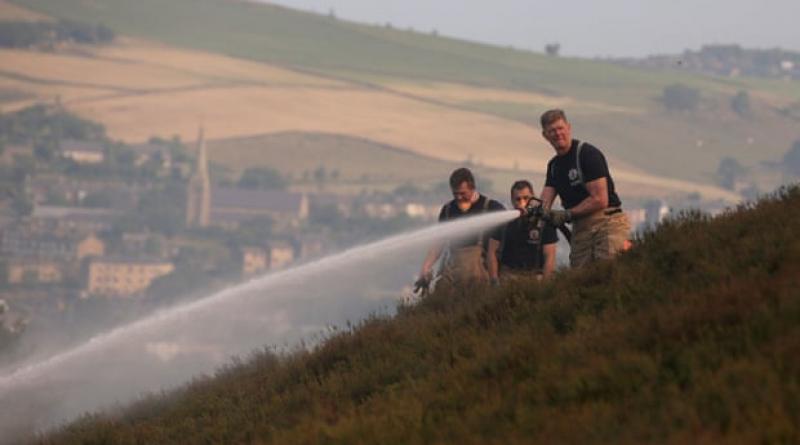Likelihood of 40C temperatures in UK is ‘rapidly accelerating’.

Such deadly heat may become regular occurrence later this century, scientists find.
The likelihood of the UK experiencing deadly 40C temperatures for the first time is “rapidly accelerating” due to the climate crisis, scientists have found.
The research shows that such searing heat could become a regular occurrence by the end of the century unless carbon emissions are cut to zero. Global heating has already made UK heatwaves 30 times more likely and extreme temperatures led to 3,400 early deaths from 2016-19.
The highest temperature recorded in the UK is 38.7C, set in Cambridge in July 2019, while the summer of 2018 was the joint hottest on record. The new analysis found an increasing risk of even higher temperatures.
Today, a high of 40C is expected once every few centuries. But this would be every 15 years in a medium emissions scenario, in which carbon cuts are made but not enough to meet the 1.5C or 2C limits agreed by nations in the 2015 Paris climate deal. In a worst-case scenario, with emissions continuing the trend of recent decades unchecked, somewhere in the UK would reach 40C every 3.5 years.
The new analysis follows research in 2019 that used the same medium emissions scenario to indicate that by 2050 London will have the same climate that Istanbul has today, Leeds will be like Melbourne, Cardiff like Montevideo in Uruguay, and Edinburgh like Paris. All these foreign cities have already broken 40C.
“The probability of recording 40C, or above, in the UK is now rapidly accelerating,” said the scientists in the study, published in the journal Nature Communications. Its lead author, Nikolaos Christidis, at the Met Office Hadley Centre, said: “The rate of change is remarkable.”
“Last year, we had the record temperature in the UK and [Public Health England] reported spikes in mortality,” Christidis said. “When these kinds of events happen, we have detrimental impacts to our transport infrastructure, agricultural catastrophes and water shortages. We need to reduce our vulnerability to these kinds of impacts.”
Prof Piers Forster, at the University of Leeds and not part of the Met Office study, said: “Heatwaves are a real risk to life in the UK, especially if we do not begin modifying our homes, workplaces and hospitals to manage their expected overheating.”
The government’s official advisers, the Committee on Climate Change, said on 25 June “the UK is poorly prepared for the very serious impacts of climate change, including … overheating”.
“However, we should note that in terms of heatwaves, the UK will get off lightly compared with most other nations,” said Forster. “Heatwaves in the major crop-growing regions of the world could have more profound effects, both globally and for the UK.”
The Met Office research combined temperature measurements at 1km scale across the UK with 16 large-scale climate models to calculate the likelihood of an extreme temperature being reached somewhere in the nation in a particular year.
The significantly larger risk in the high-emissions scenario compared with the medium-emissions scenario shows cutting carbon emissions makes a big difference in reducing the frequency of extreme heat, from breaching 40C once every 3.5 years to once every 15 years.
The scientists also examined the likelihood of exceeding 35C. This occurs in the UK about every five years at present, but would be an annual occurrence by the end of the century in either emissions scenario.
The south-east and south regions of the UK are most affected by the rising heat, because other regions benefit more from the cooling influence of the Atlantic ocean. The study found that many areas in the north for which 30C is extremely rare may exceed that level at least once per decade by 2100.
Some scientists argue that the high-emissions scenario is unrealistic given the action being taken by nations to at least curb carbon emissions. However, Forster said: “Fortunately, the increasing use of fossil fuels portrayed in [the high-emissions scenario] is unlikely, but the average temperature levels seen at the end of the century under this scenario still remain a real risk if some of the worst-case amplification effects in the Earth system come to pass, such as massive permafrost thawing.”
30 June 2020
The Guardian



